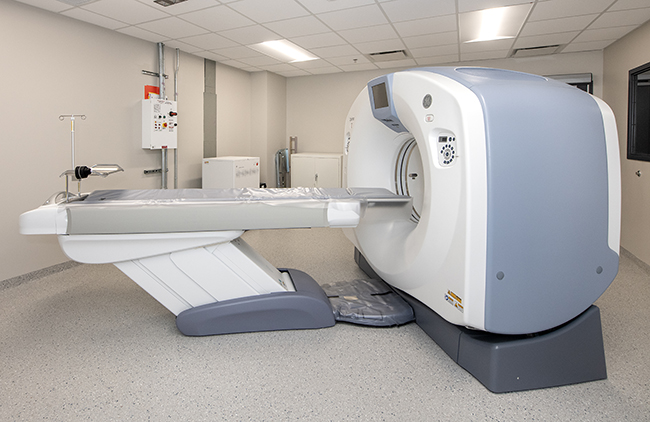Get to Know Your Doctor
12 Jul 2014
With the help of local experts, we examine the patient-doctor relationship, and discover some signs of hope for healthcare patrons
By BILL FARLEY

Back in the day, when the family doctor was an authority figure who knew most of his patients from infancy and kept his records on scraps of paper or in his head (a generation or so, just about all physicians were male), people sought him out once a year for a “routine physical” or when they were clearly injured or very, very sick.
The family doctor was the diagnostician as well as the prescriber of mysterious Rx healing potions, and if he felt whatever ailed a patient was out of his immediate realm of expertise, he recommended seeing a specialist.
All that’s pretty much the same today, even though doctors have gone high-tech and keep each patient’s history on computerized files, often on tablets that can be taken right into the examining room, and they are frequently linked to the records of all of the patient’s other physicians. And, they are expected to have a much broader range of knowledge about conditions that once upon a time might have had them scratching their heads and giving a referral for a consultation with an expert.
In addition to the time-honored tools such as thermometers, blood pressure cuffs and stethoscopes, today’s physicians have a battery of new and exciting devices to assist them in helping their patients back to being healthy.
A lot has changed in the doctor-patient relationship, but one thing is more important than ever, the patient’s opportunity and responsibility to participate in the healing process by using two important bodily organs, the lips and the brain.
Despite all of their sophisticated tools, today’s primary care physicians have such large caseloads that their time with each patient is limited. They have to get a handle on what’s wrong with each individual, what’s causing the problem and what can be done to prevent and/or cure it.
That’s where asking questions comes in, and you, the patient, can direct the conversation so that the doctor has the most complete picture of what’s going on in your body and your mind.
If that seems daunting, it’s not. Today, each patient has access to a host of resources to assist him or her in formulating key questions that will make each office visit as rewarding and beneficial as possible.
In general, the best and most widely used medical web sites such as WebMD, Medicine.net,The Cleveland Clinic and the federal Agency for Healthcare Research and Quality strongly recommend that before each office visit, patients put together a brief but relevant list of questions they’d like answered by their primary care doctor.
Ask Questions As with all good relationships, communication if key. Here are some helpful hints for talking to your doctor.
» “What do you think is causing my problem?”
» “What tests will you do to diagnose the problem and how safe are those tests?”
» “What is the long-term outlook for my condition, with and without treatment?”
» “What are my treatment options?”
» “Is it necessary for me to be monitored for side effects of any medications you prescribe, and might those medications react adversely with other meds I am taking?”
» “What hospital is best for my needs?”
There are literally dozens of questions a patient can write down on paper or on a smart phone or tablet as reminders for their office visit. It’s not necessary or even possible to ask them all, so putting together a check list and trimming it down to the most important questions about one’s condition is important.
Luckily, there are very specific resources on the internet to assist and guide patients. Many offer very specific recommendations for questions relating to the conditions in which their doctors specialize – cancer, diabetes, arthritis, sports medicine and many more. It’s easy and free to visit those sites and learn the questions they believe you should be asking your health care provider.
Dr. Todd Kornegay of the New Hanover Medical Group said, “For checkups, I always ask for a detailed list of medications. In general, I always ask patients to be able to tell me the history of their present illness, the quality of their symptoms, what makes them better, what makes them worse and whether they have ever had them before.”
“For specific populations, such as diabetes patients, I try to get them to bring me a diary of their sugar tests. For high blood pressure patients, a diary of their daily home readings is a significant help. I also like to see their meters and their blood pressure cuffs, respectively. If those aren’t accurate, all of their diaries will be inaccurate, too. Now, there are also smart phone apps that can provide all this information, plus line graphs of the patient’s actual sugar and blood pressure readings, and the date and time they were taken.”
“I have several patients who carry a business card size laminated paper that lists all their medicines, all the surgeries they’ve ever had in their life, and all their hospitalizations. That information can be critical especially when I’m examining a patient for the first time.”
Dr. Raja Bhat, in private practice in Wilmington said, “Interestingly, new patients tend to be very focused on what they want from their physician. Established patients are often less focused on what they want to achieve. They tend to think that if an appointment is scheduled they just better show up! I would highly recommend that patients plan every visit.”
In his view, the number one task is for patients to list all of their medications and note which ones are getting down toward zero, or have actually run out. Dr. Bhat recommends actually bringing one’s medicine bottles to his office, particularly if they have prescriptions from several doctors. That way he can see everything in its entirety.
“Of course, the computer program I’m running helps me keep track of much of this information so I can be proactive and remind them. Electronic records have changed my life as a physician.”
“As for a list of problems to be discussed, it doesn’t matter to me how long it is. Whatever I can handle in one visit, I will. Whatever I can’t, I will deal with in a follow-up visit.”
Dr. Bhat also strongly suggests that patients search their memories for the dates of their previous important tests such as colonoscopy, bone density and mammograms.
For patients on Medicare, he recommends finding out what drug plans their Medicare Part B covers, what mail order plans it uses and what pharmacies are on their preferred list.
“Patients bring everything to their primary care physician,” Dr. Bhat said. “It’s different when seeing a specialist. They focus on their area of expertise and don’t have to bother with the rest of the body.”
At the end of the day, what’s just as important as being prepared to present your primary care physician with all the facts and figures about the state of your health, is the willingness and ability to participate in an active dialogue. There’s nothing that inhibits a productive examination more, than a patient who is unwilling or unable to talk openly to the doctor, and then listen attentively to what that healer has to say.














